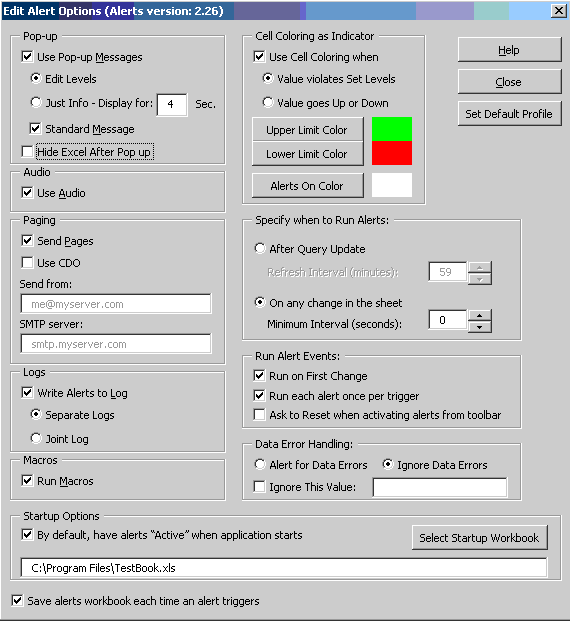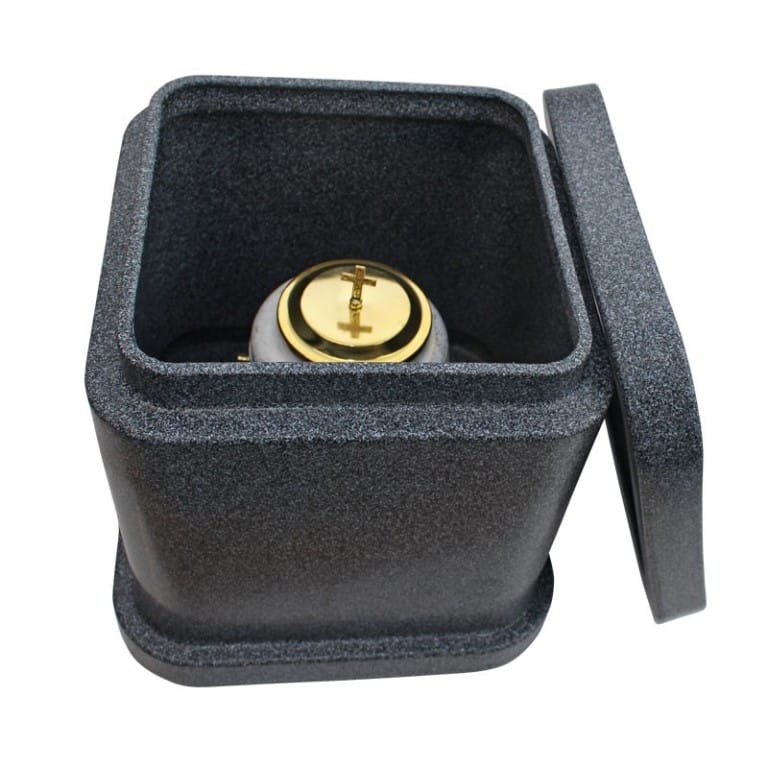Flood Alerts Explained: Understanding And Preparing For High Water

Table of Contents
Understanding Different Types of Flood Alerts
Flood alerts come in various forms, each signifying a different level of risk and requiring a different response. Understanding these distinctions is vital for effective flood preparedness.
Flood Watches
A flood watch means that conditions are favorable for flooding. While flooding isn't imminent, the potential exists. This is the time to monitor conditions closely and be prepared to take action if necessary.
- Indicates: Conditions are conducive to flooding; rainfall, snowmelt, or dam failures could lead to high water levels.
- Action Required: Monitor weather reports closely, review your flood preparedness plan, and gather essential supplies. Examples include heavy rainfall in a short period, rapid snowmelt in spring, or dam or levee failures.
Flood Warnings
A flood warning signifies that flooding is happening or will happen very soon. Immediate action is required to protect yourself and your property.
- Indicates: Flooding is occurring or is expected to begin immediately in the specified area.
- Action Required: Evacuate if instructed by authorities. Move valuable possessions to higher ground. Be prepared for the impact of strong currents and potential damage to property. Warnings usually include specific locations and expected impacts, such as the extent of flooding and potential water levels.
Flood Advisories
A flood advisory indicates that minor flooding is occurring or is expected. While less severe than a warning, caution is still advised.
- Indicates: Localized flooding is occurring or is expected, but the impact is generally less severe. Water may inundate low-lying areas, but the threat to life and property is lower compared to warnings.
- Action Required: Stay informed, avoid driving through flooded areas, and monitor conditions carefully. Advisories are often issued for situations like ponding of water on roadways or minor river rises.
Flash Flood Warnings
A flash flood warning is extremely serious. It signifies a rapid, life-threatening flood is occurring or is imminent. Immediate action is crucial.
- Indicates: A sudden and dangerous flood is happening or is about to happen; the water rises quickly, giving little to no time for evacuation.
- Action Required: Seek higher ground immediately. Flash floods can be exceptionally dangerous due to their speed and power; swift currents can sweep away vehicles and people. Characteristics include intense rainfall, sudden dam or levee failures, and rapid water rises in normally dry areas.
How to Stay Informed About Flood Alerts
Staying informed is critical during flood events. Utilizing multiple information sources ensures you receive timely and accurate alerts.
Multiple Information Sources
Don't rely on a single source for flood alerts. Diversify your information streams to maximize your chances of receiving timely warnings.
- National Weather Service (NWS): Check the NWS website and app regularly. This is the primary source for official weather warnings.
- Local News: Local television, radio, and online news outlets often provide up-to-date information and localized alerts.
- Emergency Alert Systems: Ensure your mobile device and home are equipped with NOAA Weather Radio or other emergency alert systems.
- Local Government: Sign up for emergency alerts and notifications through your local government's website or emergency management agency.
Signing up for Alerts
Proactive registration is key to receiving critical flood alerts promptly.
- Local Government Registration: Most municipalities offer registration for emergency alerts through their websites. This allows them to directly contact you during severe weather events.
- Weather Apps: Many weather apps provide real-time alerts and severe weather notifications. Customize your settings to receive alerts for your specific location.
- Understanding Alert Systems: Familiarize yourself with the various alert systems (e.g., Wireless Emergency Alerts, NOAA Weather Radio) to understand how they function and how to receive notifications.
Creating a Flood Preparedness Plan
A proactive approach to flood safety involves developing a comprehensive plan well before a flood occurs.
Emergency Kit
Assemble an emergency kit that can sustain your household for at least 72 hours.
- Essentials: Include bottled water (one gallon per person per day), non-perishable food, medications, first-aid kit, flashlight, batteries, a battery-powered radio, important documents (copies of insurance, identification), and cash.
- Pet Supplies: If you have pets, include food, water, leashes, carriers, and medications for them.
- Accessibility: Keep the kit in an easily accessible location, preferably on an upper floor if possible.
Evacuation Plan
Develop and practice an evacuation plan in case you need to leave your home quickly.
- Routes: Identify multiple evacuation routes and escape paths from your home.
- Flood Zone: Know your flood zone and understand the associated risks.
- Meeting Point: Establish a designated meeting point for your family in case you get separated during an evacuation.
Protecting Your Home
Take steps to protect your home and belongings from potential flood damage.
- Elevate Items: Move valuable possessions, furniture, and electronics to higher levels in your home.
- Flood Barriers/Sandbags: If you live in a high-risk area, consider installing flood barriers or sandbags around your home.
- Utilities: Know how to quickly turn off gas, electricity, and water if advised to do so by authorities.
Actions to Take During a Flood
During a flood, your safety is paramount. Follow these crucial steps.
Evacuate if Instructed
Obey all evacuation orders issued by authorities. This is critical for your safety. Do not delay; floodwaters can rise rapidly.
Move to Higher Ground
Avoid flooded areas completely. Never attempt to walk or drive through floodwaters, as even shallow water can be deceptively dangerous.
Never Drive Through Floodwaters
Floodwaters can easily sweep vehicles away, even seemingly shallow water can hide strong currents and debris. Never drive through floodwaters; turn back and find an alternate route.
Stay Informed
Continue to monitor weather reports, news updates, and official sources for information about the flood's progression and any changes to evacuation orders or safety instructions.
Conclusion
Understanding and preparing for flood alerts is vital for protecting yourself and your loved ones. By understanding the different types of alerts, staying informed through multiple channels, and creating a comprehensive flood preparedness plan, you can significantly reduce your risk during periods of high water. Don't wait until it's too late. Take action today and develop your own flood preparedness strategy. Learn more about flood alerts and how to stay safe by consulting your local emergency management agency. Remember, being prepared is the best defense against the dangers of high water and flood warnings.

Featured Posts
-
 Sutton Hoos Mysterious Sixth Century Vessel A Burial Urn For Cremated Remains
May 25, 2025
Sutton Hoos Mysterious Sixth Century Vessel A Burial Urn For Cremated Remains
May 25, 2025 -
 Apple Stock Q2 Earnings Preview What To Expect
May 25, 2025
Apple Stock Q2 Earnings Preview What To Expect
May 25, 2025 -
 Daks Alalmany Ytkhta Dhrwt Mars Awl Mwshr Awrwby Yhqq Hdha Alinjaz
May 25, 2025
Daks Alalmany Ytkhta Dhrwt Mars Awl Mwshr Awrwby Yhqq Hdha Alinjaz
May 25, 2025 -
 Amundi Msci World Catholic Principles Ucits Etf Acc Daily Nav And Investment Implications
May 25, 2025
Amundi Msci World Catholic Principles Ucits Etf Acc Daily Nav And Investment Implications
May 25, 2025 -
 Fatal And Multiple Injury Shooting In Myrtle Beach Officer Involved Sled Investigation
May 25, 2025
Fatal And Multiple Injury Shooting In Myrtle Beach Officer Involved Sled Investigation
May 25, 2025
